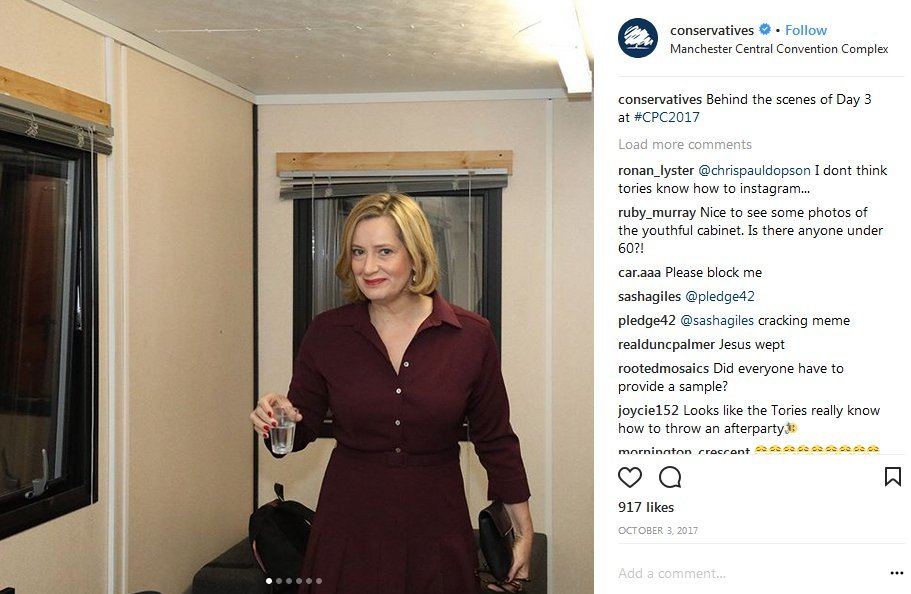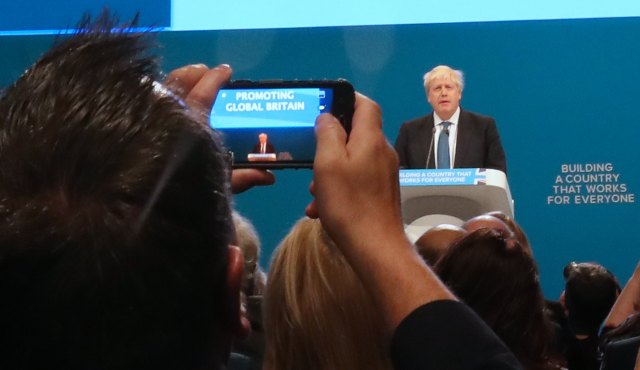Foreign Secretary Boris Johnson

It was easy to talk about Conservative digital strategy in 2015: the party ran a sophisticated online campaign of Facebook ads, spending over £1 million versus Labour’s £16,000. This approach secured a surprise majority against Ed Miliband’s “four million conversations” doorstep-based strategy.
But if you try to have a conversation about the Conservative’s digital strategy today, you hear something different: “Are we on the record?” Which proves the old adage that while success has many fathers, failure is always an orphan.
In three years, the Conservatives have shifted from having a world-leading digital operation to being hopelessly outgunned – on the internet at least – by a reinvigorated Labour party, boosted by Momentum.
The only occasion a Conservative MP really broke through on Twitter this year was when the party’s deputy chair tweeted an apology to Jeremy Corbyn, which at Labour’s insistence included the phrase “please retweet”.
On the 19th of February I made a defamatory statement about @jeremycorbyn. I have apologised to Mr Corbyn and here is the complete text of my apology. Please retweet. pic.twitter.com/6JZc8O9E82
— Cllr Ben Bradley MP (@BBradley_Mans) February 24, 2018
The message was shared more than 55,000 times – more than twice the total number of retweets Theresa May’s account had achieved by that point in 2018.
Losing on social media hurts the Conservatives in two ways: first, it means fewer people see their messages on those platforms, but second it also has a huge effect on what news people see. Almost all of the top 25 most-shared political stories during election 2017 were pro-Labour, often highly partisan articles from niche blogs with a virulently anti-Conservative stance; the widespread sharing legitimises the message.
Tory party insiders will, albeit off-the-record, blame their digital decline on a perfect storm of online factors, party funding and strategy, and online demographics. But there are real-world elements at play too.
The online factors are pretty straightforward: the Conservatives had a winning digital war room in 2015. But after the election this was largely disbanded, given the expectation that there would be no further elections for five years, and the need to save money after an expensive election. Some of that team did return for the 2017 election, but the momentum had been lost and the world had moved on. The party outspent Labour on Facebook by a factor of more than ten to one in 2015, but in 2017 Labour had caught up and the ratio dropped to three to one.
The backdrop to the spending has changed, too, especially in the wake of the Cambridge Analytica scandal: reporting from February 2015 notes the Conservative Party “spent over £71,000 on the purchase of ‘email collection’ and almost £36,000 on Facebook ‘likes’” – both practices that, in 2018, might be seen as ethically questionable. This serves to highlight another headache as the Conservatives rebuild online. Because the rules of the game have changed, they can only take part of their steer from 2015’s successes – they can’t simply recreate what they did last time.
The party’s online efforts also took a knock when Theresa May became party leader, because the feeling was online was “a David Cameron thing”, something which could be left behind, at least to an extent, in favour of door knocking and more down-to-earth politics.
These factors are all significant, but they’re dwarfed by the far bigger problem of a Labour party which is resurgent with young voters. Labour leads Conservatives among young voters by 25 to 30 points in most polls, and younger adults are far more likely to be on social media. The Conservative party simply faces a demographic struggle online: around one in three Twitter users is under 30, while only 5% are over-65. The internet is often hostile territory for a British Conservative.
This becomes all the trickier when you consider also the membership base of the two parties: while the Conservatives claim around 124,000 members (mainly older adults), Labour has four times as many, and these are often relatively new, active, young members eager to share large quantities of content online: perfect early boosters for the party’s messages.
The massive disconnect between party and online voters was perfectly captured at last year’s party conference – the nadir of the Conservatives’ online fortunes – when the official Instagram account pushed out promoted posts of cabinet ministers backstage, in unposed photos in beige rooms. These were met with widespread derision, as Labour posted slick, posed Insta shots of young activists holding banners with the party’s messaging.

It couldn’t get much worse for the Tories. So credit to them for actually managing to improve since then, boosting its digital team and making more use of Theresa May and other social media accounts. But its main online difficulty isn’t really the fault of May or anyone else within the party: the problem is that the Conservatives are in government.
It’s easy for Labour to run campaigning messages that will go viral: it is in opposition and doesn’t need to get into specifics. It can promise to scrap tuition fees, or nationalise rail, or any one of its wide range of retail politics offers, many of which are targeted towards the young.
By contrast, the Conservatives are left with the prose of government. “It’s not as easy to sell ‘We balanced the national account books’,” said one party insider. “And ‘yes, but Jeremy Corbyn’ hasn’t worked as well as it should have. We’re getting the messaging right on the facts, but it’s hard to hit the emotions in government.”
Looked at this way, the Conservatives don’t have a digital problem so much as a policy problem: while it’s always hard to go viral when you’re in government and the country’s screw-ups are your fault, it’s particularly hard when you have nothing much as part of your offer.
So confident was the party of victory in 2017, that it bypassed usual political considerations, such as a few simple and popular policies that would be easy to sell on the doorstep, choosing instead to offer complex measures which proved unpopular (such as its social care proposals) or wonkish offers unlikely to swing votes (like workers on boards).
Ever since that catastrophe, the Government has been almost entirely consumed by Brexit, with barely another policy on the table. Labour, meanwhile, offers free bus travel to under-25s, more health spending, an end to austerity, no more tuition fees, and more. A compromise not-too-hard, not-too-soft Brexit and fiscal responsibility will never match that in the world of social media. If the Conservatives want their messages to be better heard online, they have a simple question to tackle first: what is their message?










Join the discussion
Join like minded readers that support our journalism by becoming a paid subscriber
To join the discussion in the comments, become a paid subscriber.
Join like minded readers that support our journalism, read unlimited articles and enjoy other subscriber-only benefits.
Subscribe